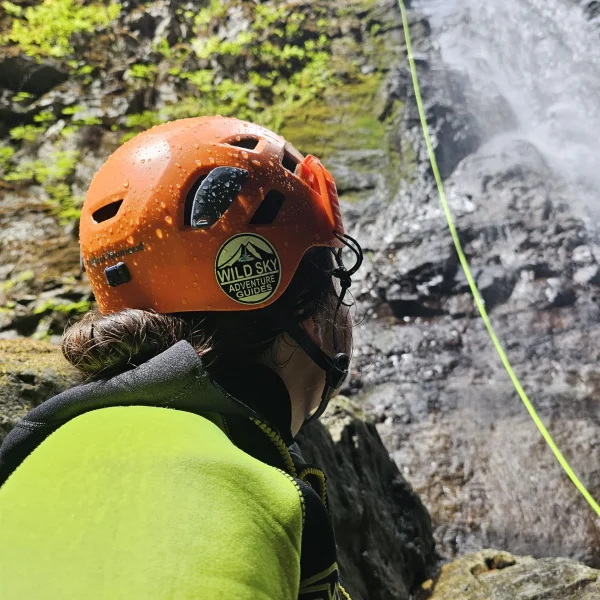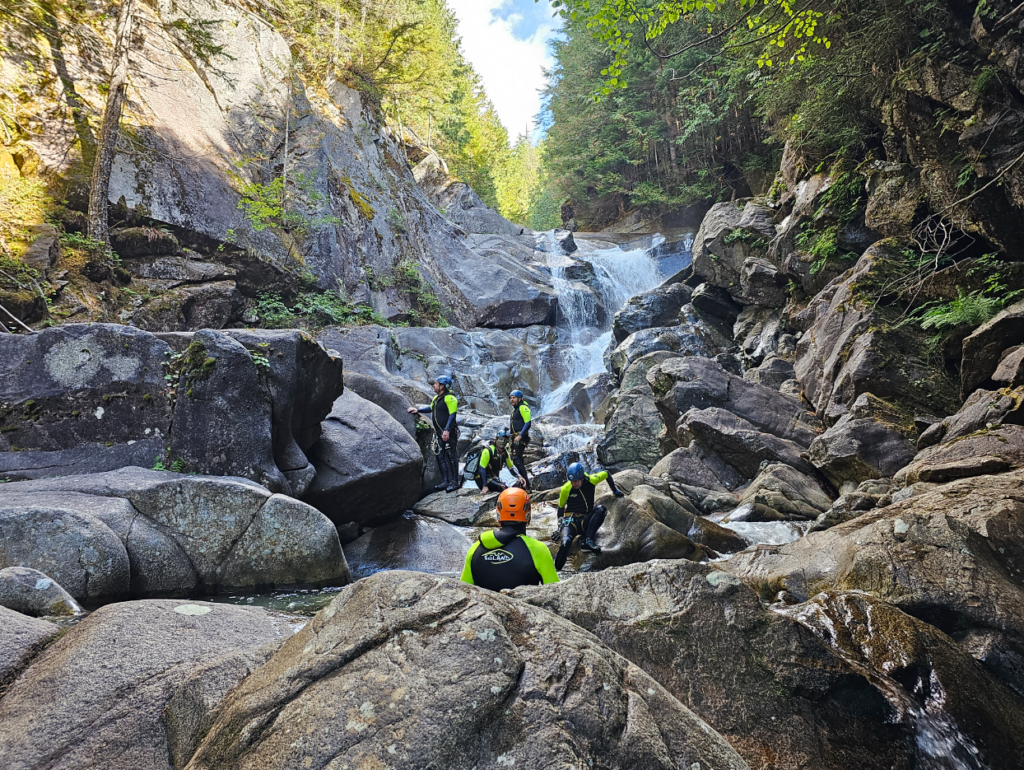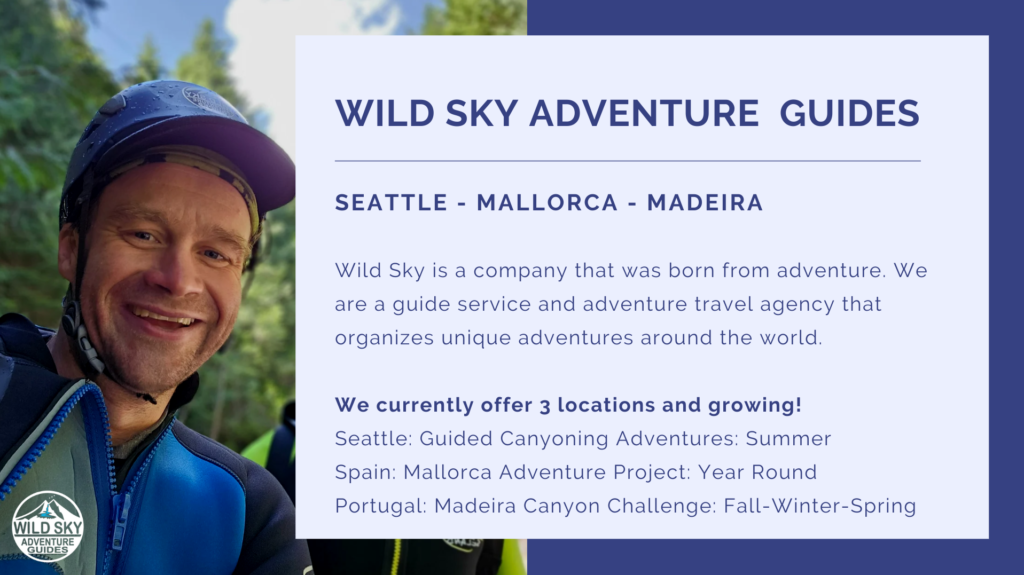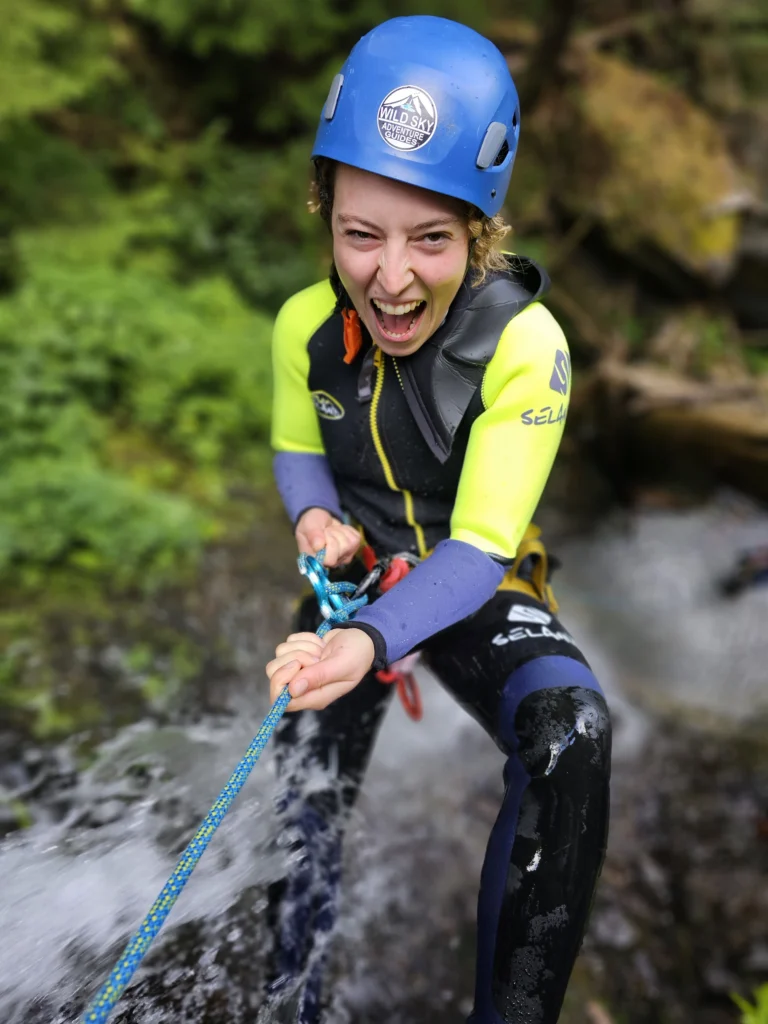Canyoneering Pro-Tips For Beginners!
Canyoneering is an exciting outdoor activity that you can enjoy no matter your age or experience level. But, like any new adventure, there are a few things you need to know before you head out.
These “Canyoneering Pro-Tips” will answer some of the most commonly asked questions about canyoneering, from what to wear and bring to how to stay safe in the canyon. We’ll also give pro-tips for making the most of your canyoneering experience.
None of these tips are a replacement for competent and certified instruction or the capable leadership of an experienced team leader. The canyon environment is an unforgiving environment and is not a place to venture too unprepared or without the proper skills in your canyoneering toolbox.
That being said, whether you’re just starting out or have been canyoneering for years, read on for some great answers to some of the questions we are most frequently asked by our clients.

Decision Making and Route Finding.
When you’re canyoneering, you’re constantly negotiating obstacles and hazards. It’s essential to know how to minimize the risk of these obstacles so that you can descend through the canyon safely. Here are a few tips for avoiding obstacles and hazards:
Plan ahead and prepare. Perhaps the most important aspect of canyon decision making. Before you go canyoneering you need to look up the route information or “beta”. A good place to research canyon beta is RopeWiki.com. Do your due dilligence so that you are informed about important information.
It is necessary to know the height of the largest rappel and any dangerous hydraulics. It is good practice to have the approach and exit information downloaded onto your phones GPS.
Keep your eyes open for anchors. Anchors can be difficult to spot. Your biggest clue is what the terrain down canyon looks like. If there is a sudden drop that would be dangerous to downclimb then slow down and take your time looking for an anchor to rappel off.
Have a plan. Before you enter any water obstacle make sure that you develop and communicate a plan with your teammates so that you dont have to improvise while in the water.
Stay calm and take your time. This is especially important when you’re dealing with tricky obstacles. If you start to feel overwhelmed, take a step back and reassess the situation.

Downclimbing Challenging Obstacles.
You’ll often find yourself downclimbing challenging obstacles when you’re canyoneering. This can be a bit of a challenge, but with the right techniques, you’ll be able to make your way through without a problem. Here are a few tips for navigating through common types of obstacles.
Take your time: When you’re exposed or moving through a difficult downclimb the last thing you want to do is to rush. Take the time before you begin to evaluate the obstacle and make a plan for how you will climb down it. Rushing will only make things worse, take your time and move with deliberation and care.
Face down canyon: New canyoneers often try to downclimb obstacles like rock climbers, facing up canyon, into the obstacle. However, since we are generally descending obstacles the proper technique is to face down canyon and use opposing forces by pushing outwards against the surrounding rock. You will have much better purchase against the rock and your muscles will be in a much more ergonomical and energy conserving position!
Teamwork and LAPAR: There is no prize for downclimbing something by yourself. The real prize comes from safely moving through the obstacles as a team. There are techniques, such as a meat anchor handline, where one team member supports a rope which the other members descend hand over hand. At the end the last team member is supported by the team members who are already below the obstacle in order to downclimb safely. In this way only the last person is at risk (LAPAR).
Use Ropes: Using ropes is the second slowest way to navigate canyon obstacles, and thus teams often hesitate to pull out the rope instead of downclimbing. BUT, the absolute slowest way to descend a canyon is to have an accident and wait in need of rescue. Honestly evaluate downclimbs, and pull out the ropes if the risk of an accident requiring rescue is apparent.
Personal Safety.
Put Long Hair Into a Ponytail. When rappelling down a canyon, the last thing you want is your hair getting stuck in your rappel device. Without the proper knowledge for self rescue you may be stuck under a waterfall and unable to breathe. Best to keep your hair up or wear it in a ponytail.
Bringing extra glasses and or contacts if you need to. If you wear contacts or glasses, you should bring a spare pair (or two) on your canyoneering excursion. Leave your spare pair in your canyon dry bucket. This way if something occurs to your original pair you will have a backup!
Bring a Thermal Layer. Beat the cold with a thermal base layer. Its lightweight and will keep you warmer while in your wetsuit.
Have a First Aid Kit: A First Aid KIt is an essential part of your canyoneering kit. There are many resources for purchasing or building a quality First Aid Kit. Additional items that a Canyoneering specific First Aid Kit should include are; thermal blankets, a spare flashlight, a SAM splint and a compression bandage.
Seek Competent Instruction.
So you want to try canyoneering but need help figuring out how to do it? Wild Sky Adventure Guides has your back. Our mission is to promote the safer practice of swiftwater canyoneering. We offer guided canyon trips in Washington State, formal training in Portugal, adventure courses and guided excursions in Mallorca, and we publish information for the public that promotes safer canyoneering practices.
Canyoneering is fun!
Canyoneering can be an extremely rewarding experience if you know what you’re doing and follow essential safety practices. Remember that you are only as good as the last time that you practiced. It is helpful to begin each canyon season with a short practice session. By following these essential tips and tricks and practice sound judgment, you’ll be able to stay safe and have the most fun possible while canyoneering.


